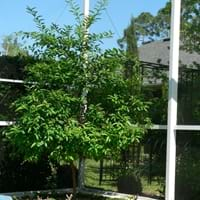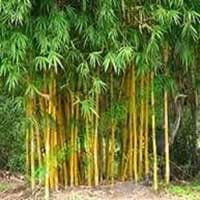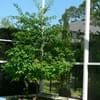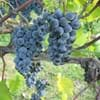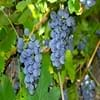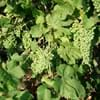Life Span
Perennial
Perennial
Origin
Hybrid origin
China
Types
Eustis, Lakeland, Tavares
Not Available
Number of Varieties
Not Available
Habitat
gardens, Woodlands
Forest margins, gardens, Grassland, Tropical regions
USDA Hardiness Zone
11-12
8-15
AHS Heat Zone
12-6
12 - 1
Sunset Zone
H1, H2, 7, 8, 9, 14, 15, 16, 17, 18, 19, 20, 21, 22, 23, 24
H1, H2, 8, 9, 14, 15, 16, 17, 18, 19, 20, 21, 22, 23, 24
Habit
Oval or Rounded
Clump-Forming
Minimum Width
Not Available
Flower Color
White
Not Available
Flower Color Modifier
Bicolor
Bicolor
Fruit Color
Light Yellow, Yellow green
Not Available
Leaf Color in Spring
Green, Dark Green
Light Green, Dark Green
Leaf Color in Summer
Dark Green
Light Green
Leaf Color in Fall
Dark Green
Light Green, Dark Green
Leaf Color in Winter
Light Green
Light Green, Dark Green
Leaf Shape
Ovate
Grass like
Plant Season
Spring, Summer, Fall, Winter
Spring, Summer, Fall, Winter
Sunlight
Full Sun
Full Sun, Partial Sun, Partial shade
Type of Soil
Loam, Sand
Loam, Sand
The pH of Soil
Acidic, Neutral
Acidic, Neutral, Alkaline
Soil Drainage
Well drained
Average
Bloom Time
Late Spring, Early Summer
Not Available
Tolerances
Drought
Drought
Where to Plant?
Container, Ground, Pot
Ground, Pot
How to Plant?
Divison, Seedlings
Seedlings, Transplanting
Plant Maintenance
High
Medium
Watering Requirements
Do not let dry out between waterings
Keep the ground moist but not water-logged, Requires regular watering, Use and maintain water-efficient soaker hoses, Use Mulches to help prevent water loss during hot and windy weather, Water every two or three days during warmer months, Water twice a day in the initial period
In Summer
Moderate
Lots of watering
In Spring
Ample Water
Moderate
In Winter
Less Watering
Average Water
Soil pH
Acidic, Neutral
Acidic, Neutral, Alkaline
Soil Type
Loam, Sand
Loam, Sand
Soil Drainage Capacity
Well drained
Average
Sun Exposure
Full Sun
Full Sun, Partial Sun, Partial shade
Pruning
Remove dead branches
Remove damaged leaves, Remove dead branches, Remove dead leaves
Fertilizers
All-Purpose Liquid Fertilizer, organic fertlizers
All-Purpose Liquid Fertilizer
Pests and Diseases
Citrus foot rot, Citrus gummosis, Citrus leaf miner
Red blotch
Plant Tolerance
Drought
Drought
Flower Petal Number
Single
Single
Foliage Texture
Medium
Medium
Foliage Sheen
Glossy
Matte
Attracts
Not Available
Birds
Allergy
Not Available
no allergic reactions
Aesthetic Uses
Showy Purposes
Beautification
Beauty Benefits
Not Available
Not Available
Environmental Uses
Air purification
Air purification
Medicinal Uses
Fiber, Vitamin C
Not Available
Part of Plant Used
Fruits
Whole plant
Other Uses
Used As Food, Used in making beverages
Culinary use, Used in construction, Used in Furniture, Used in making musical instruments, Used in paper industry
Used As Indoor Plant
Yes
No
Used As Outdoor Plant
Yes
Yes
Garden Design
Edible, Fruit / Fruit Tree, Shade Trees
Container, Feature Plant, Hedges, Screening / Wind Break, Tropical
Botanical Name
X CITROFORTUNELLA floridana
BAMBUSA multiplex 'Alphonso-Karrii'
Common Name
Limequat
Alphonse Karr Bamboo, Clumping Bamboo, Hedge Bamboo
In Hindi
Limequat
अल्फोंस Karr बांस
In German
Limequat
Alphonse Karr Bamboo
In French
Limequat
Alphonse Karr Bamboo
In Spanish
Limequat
Alphonse Karr Bambú
In Greek
Limequat
Alphonse Karr Μπαμπού
In Portuguese
Limequat
Alphonse Karr Bamboo
In Polish
Limequat
Alphonse Karr Bamboo
In Latin
Limequat
Alphonse Karr Bamboo
Phylum
Magnoliophyta
Not Available
Class
Magnoliopsida
Not Available
Clade
Angiosperms, Eudicots, Rosids
Angiosperms, Commelinids, Monocots
Tribe
Not Available
Bambuseae
Subfamily
Not Available
Bambusoideae
Number of Species
Not Available
Not Available
Season and Care of Limequat and Alphonse Karr Bamboo
Season and care of Limequat and Alphonse Karr Bamboo is important to know. While considering everything about Limequat and Alphonse Karr Bamboo Care, growing season is an essential factor. Limequat season is Spring, Summer, Fall and Winter and Alphonse Karr Bamboo season is Spring, Summer, Fall and Winter. The type of soil for Limequat is Loam, Sand and for Alphonse Karr Bamboo is Loam, Sand while the PH of soil for Limequat is Acidic, Neutral and for Alphonse Karr Bamboo is Acidic, Neutral, Alkaline.
Limequat and Alphonse Karr Bamboo Physical Information
Limequat and Alphonse Karr Bamboo physical information is very important for comparison. Limequat height is 300.00 cm and width 180.00 cm whereas Alphonse Karr Bamboo height is 460.00 cm and width Not Available. The color specification of Limequat and Alphonse Karr Bamboo are as follows:
Limequat flower color: White
Limequat leaf color: Green and Dark Green
Alphonse Karr Bamboo flower color: Not Available
- Alphonse Karr Bamboo leaf color: Light Green and Dark Green
Care of Limequat and Alphonse Karr Bamboo
Care of Limequat and Alphonse Karr Bamboo include pruning, fertilizers, watering etc. Limequat pruning is done Remove dead branches and Alphonse Karr Bamboo pruning is done Remove damaged leaves, Remove dead branches and Remove dead leaves. In summer Limequat needs Moderate and in winter, it needs Less Watering. Whereas, in summer Alphonse Karr Bamboo needs Lots of watering and in winter, it needs Average Water.
